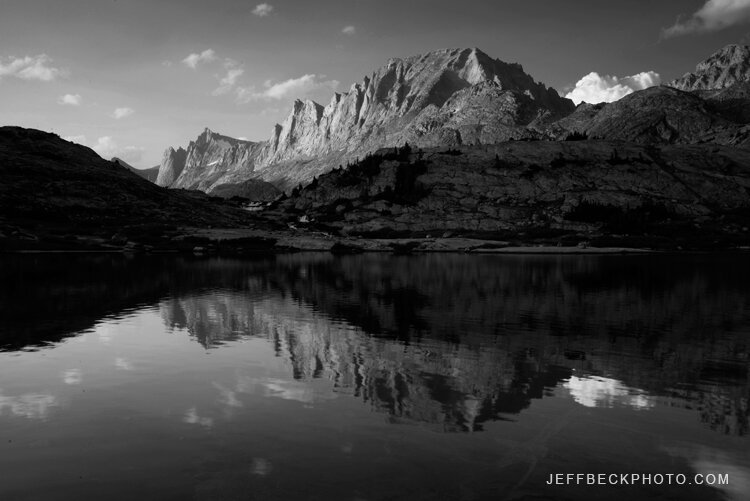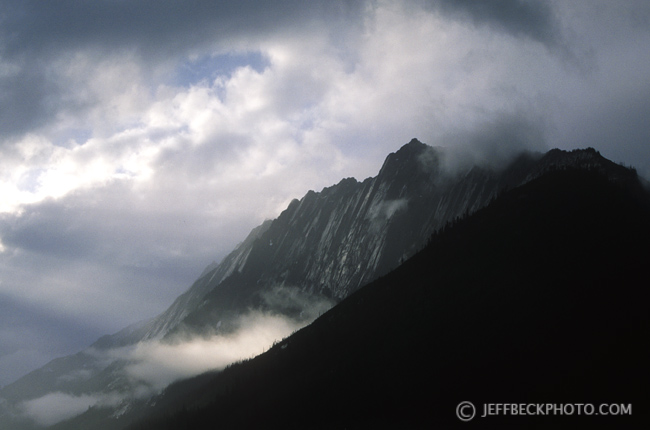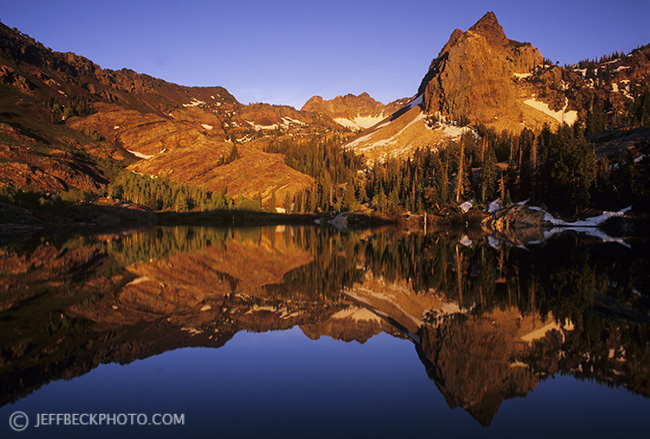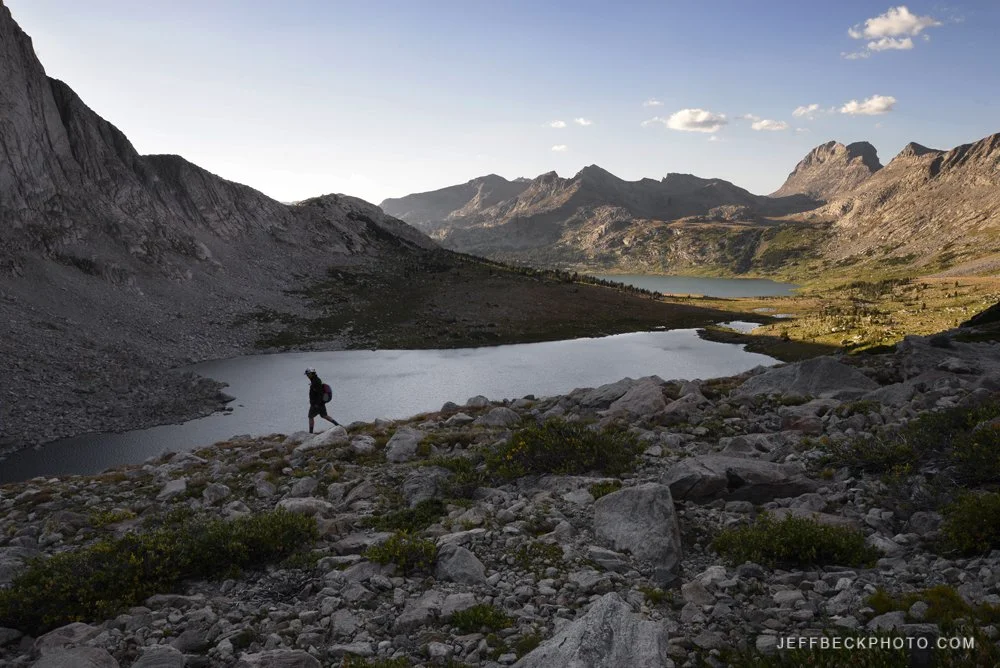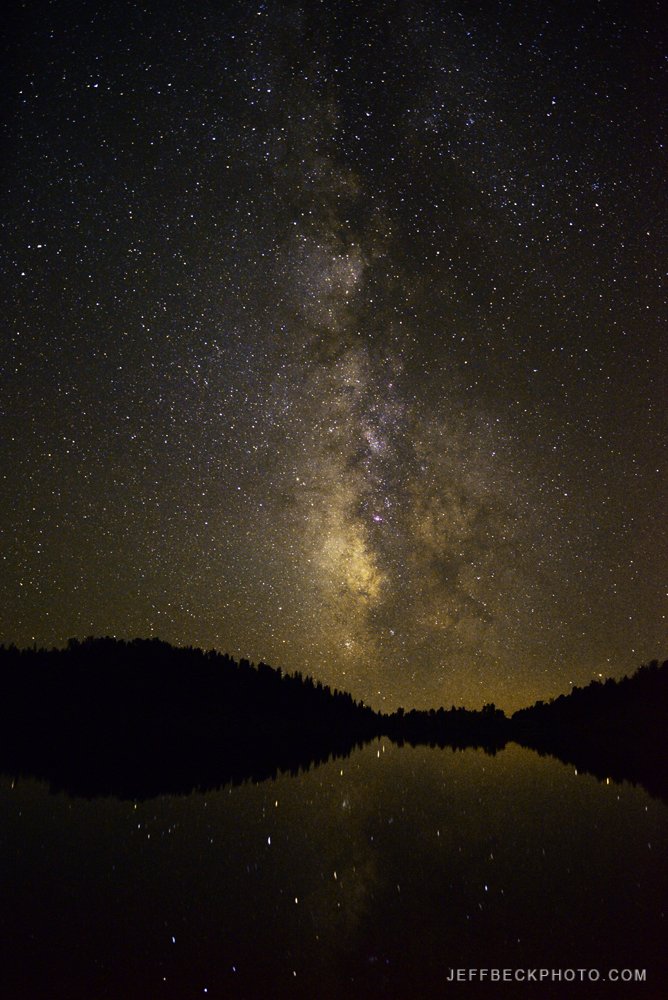
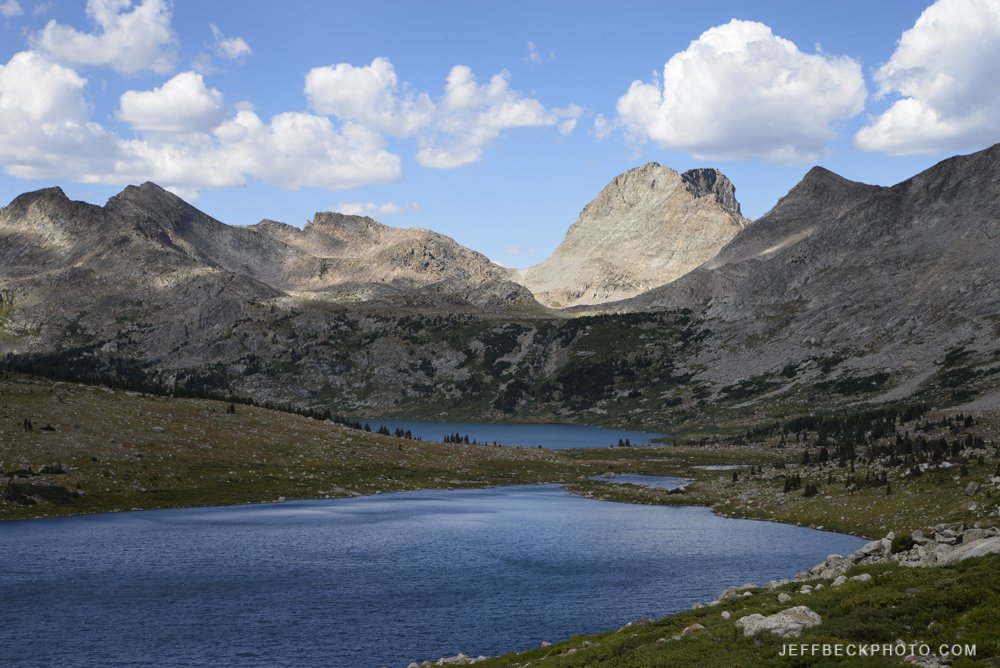
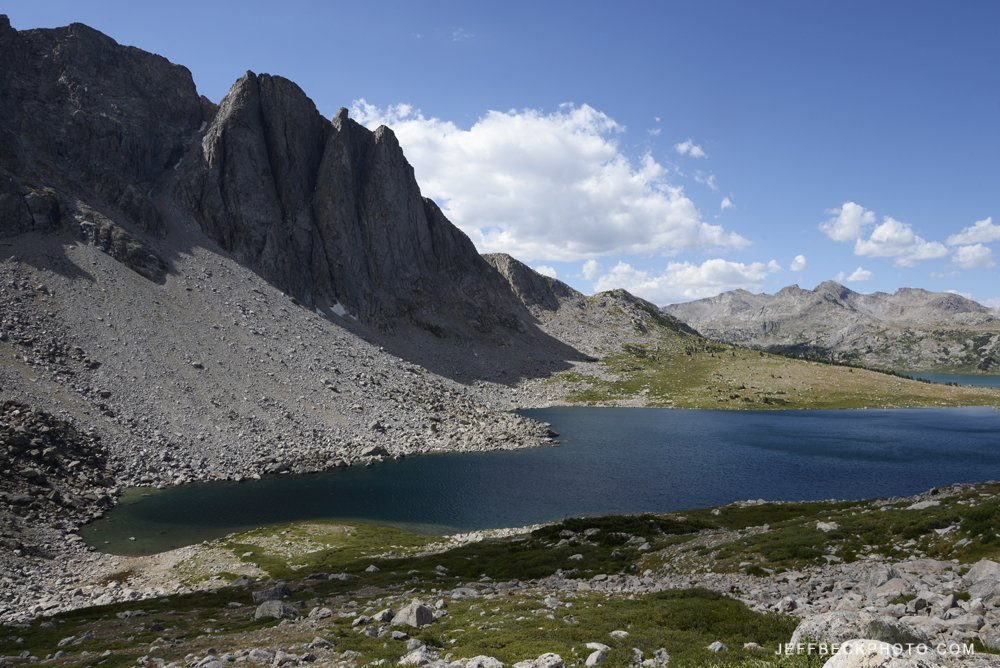
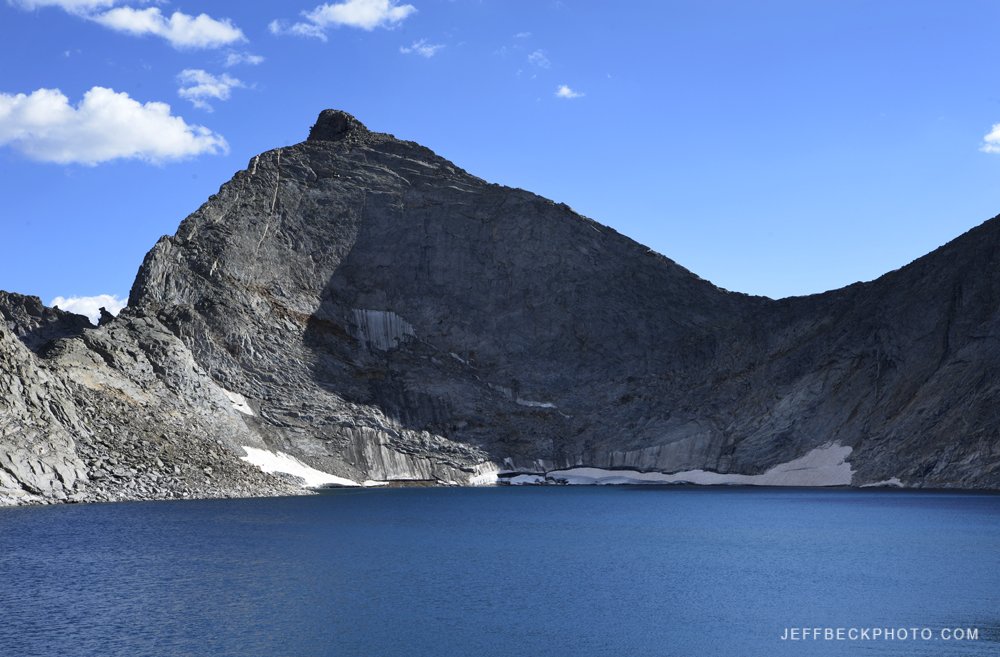
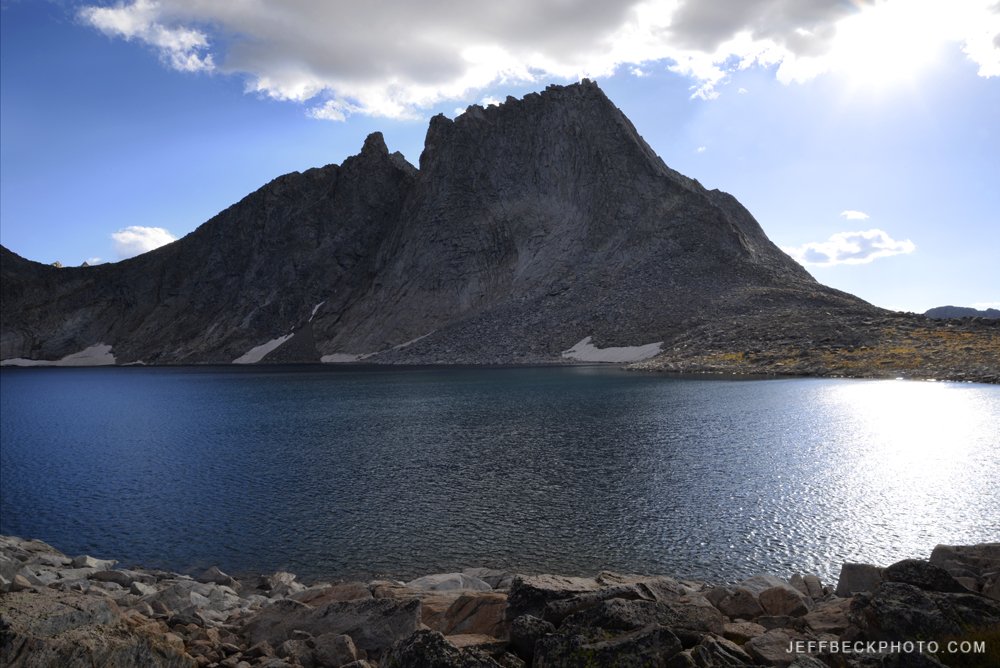
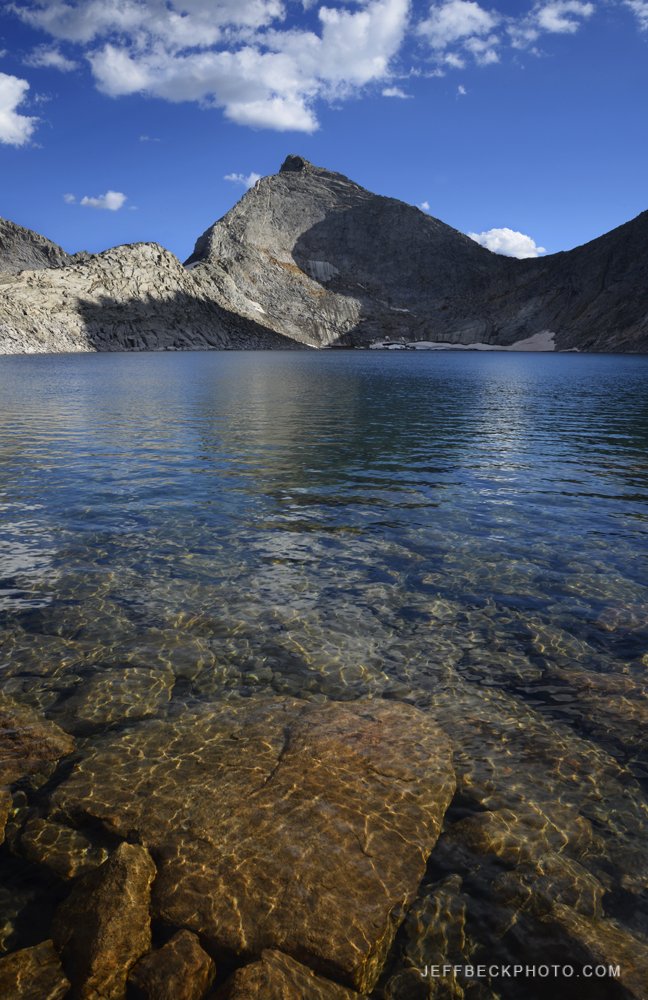

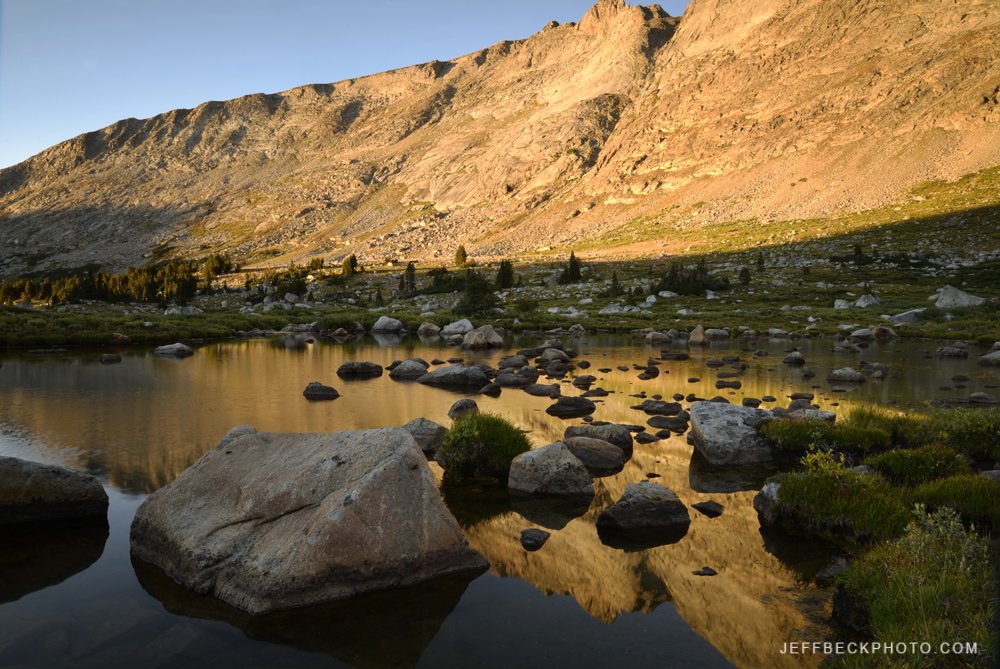
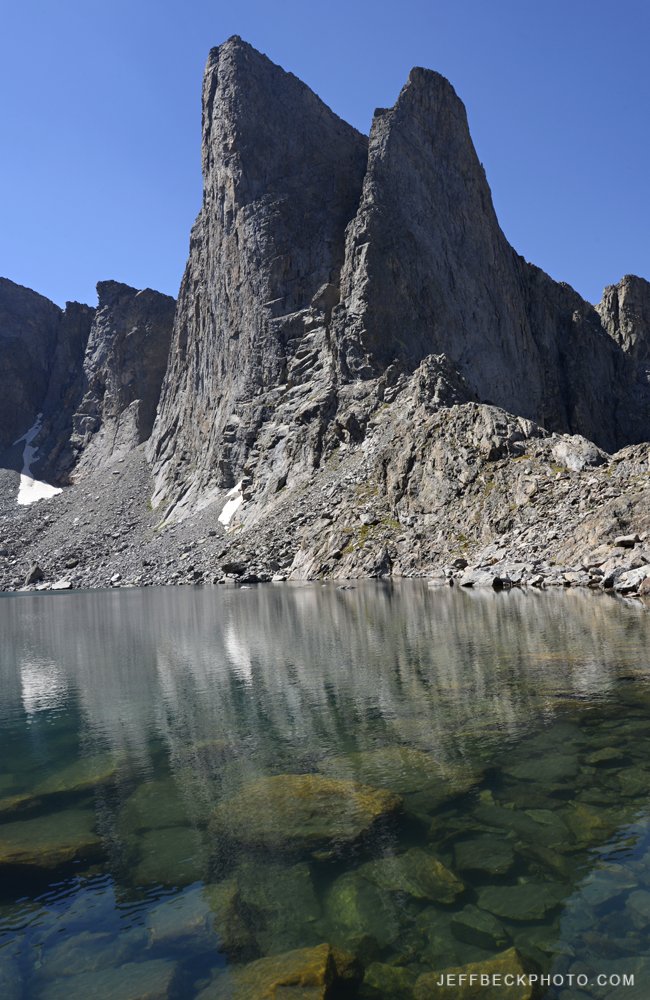
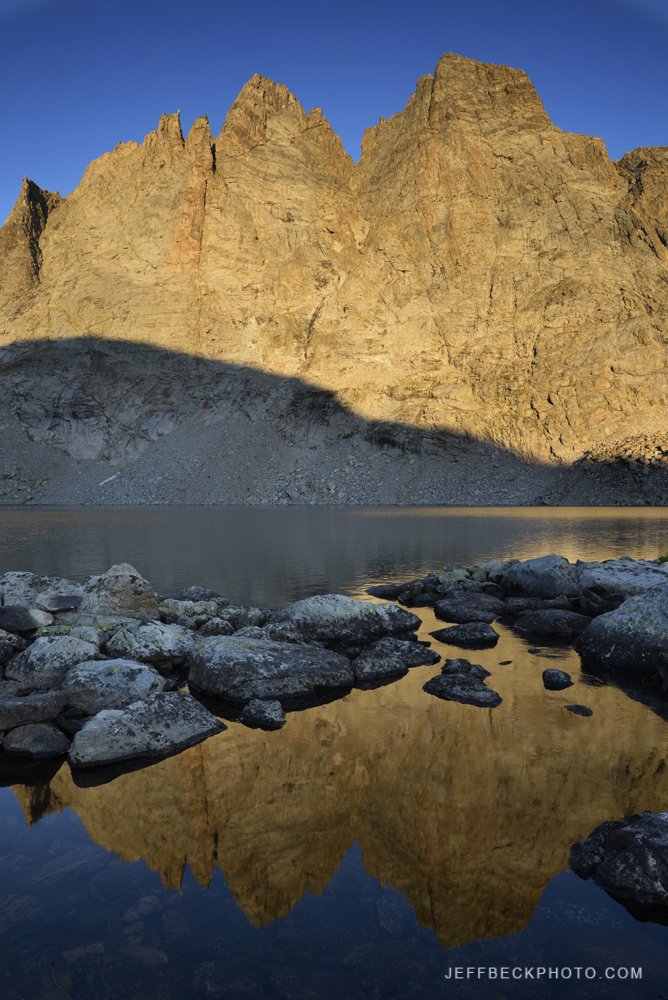
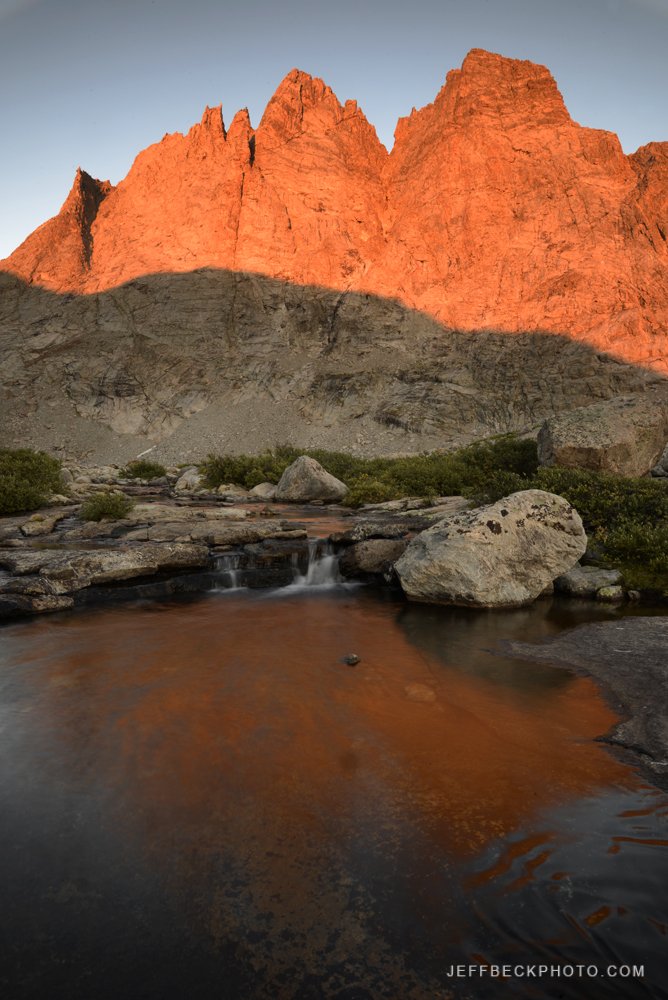
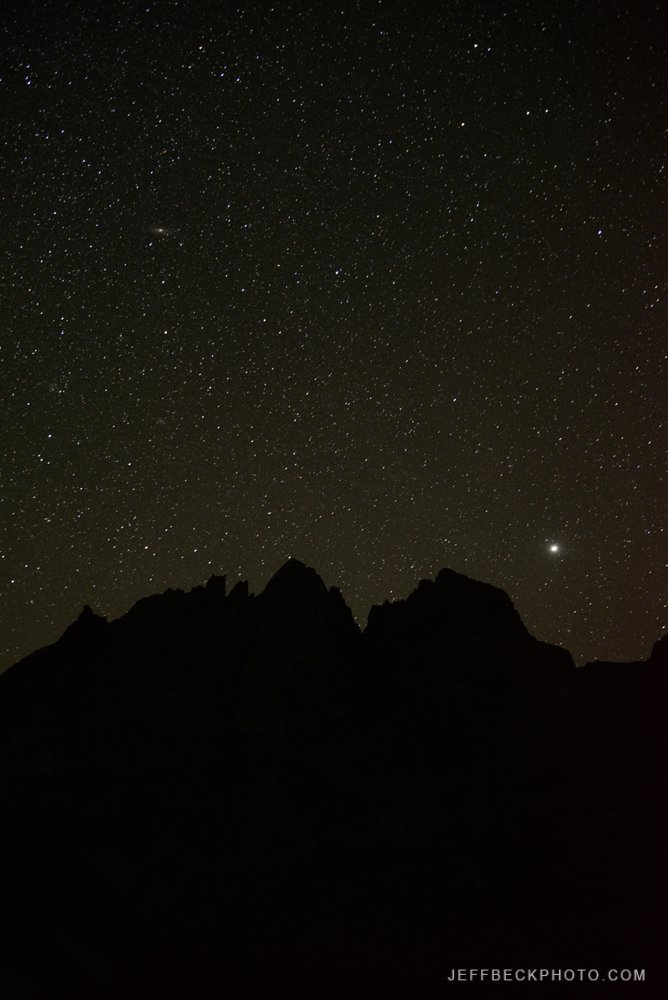
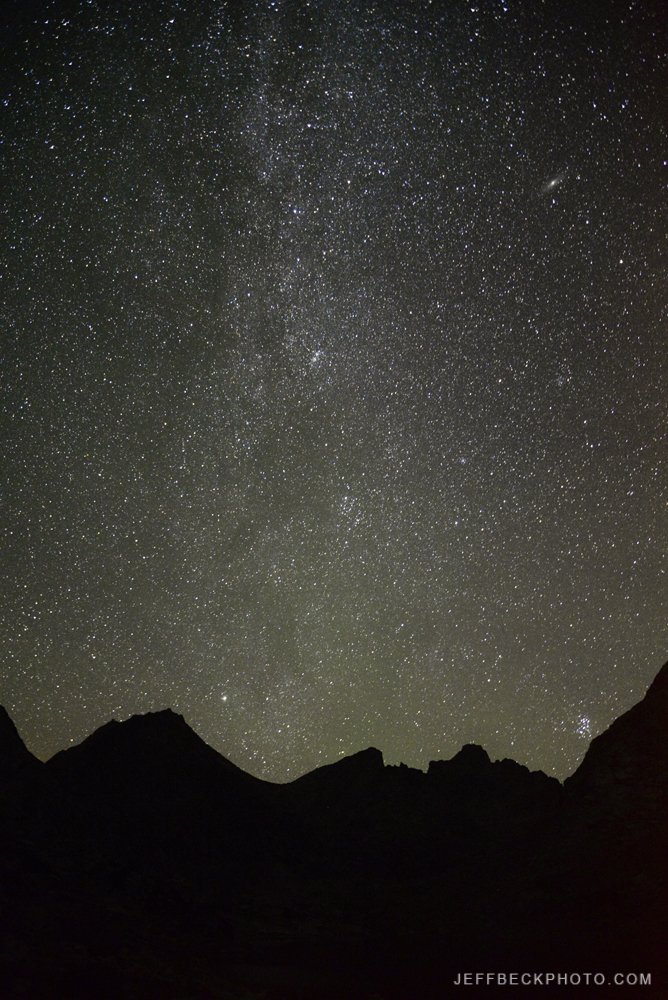
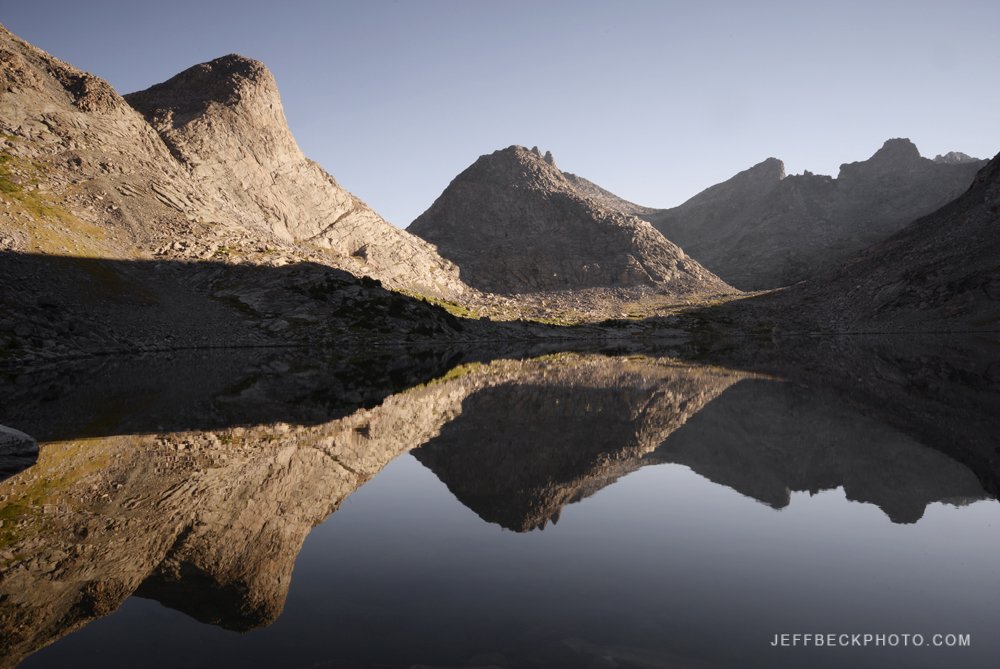
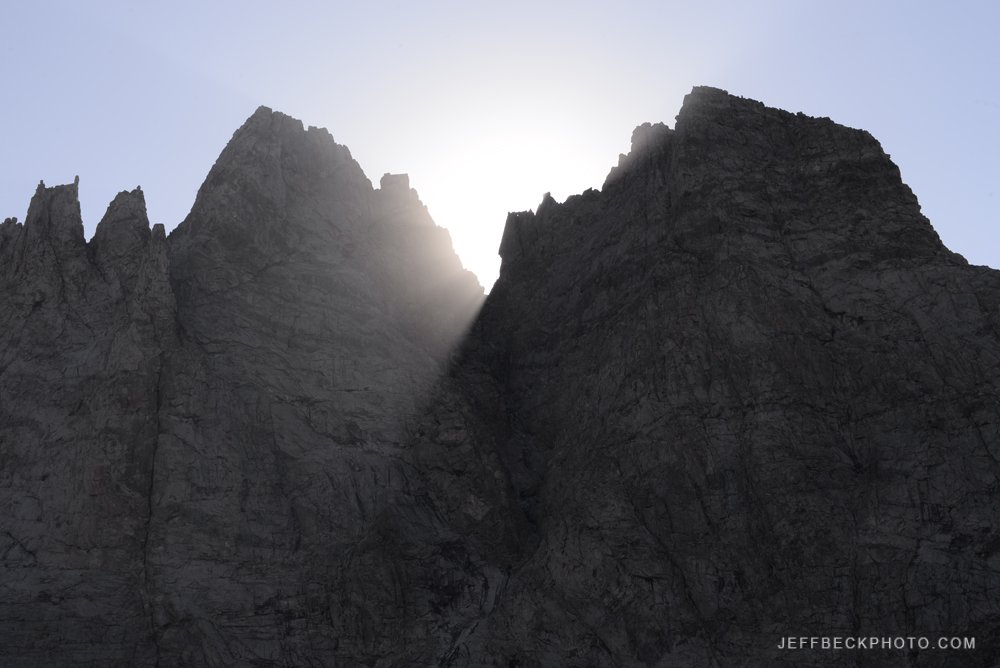
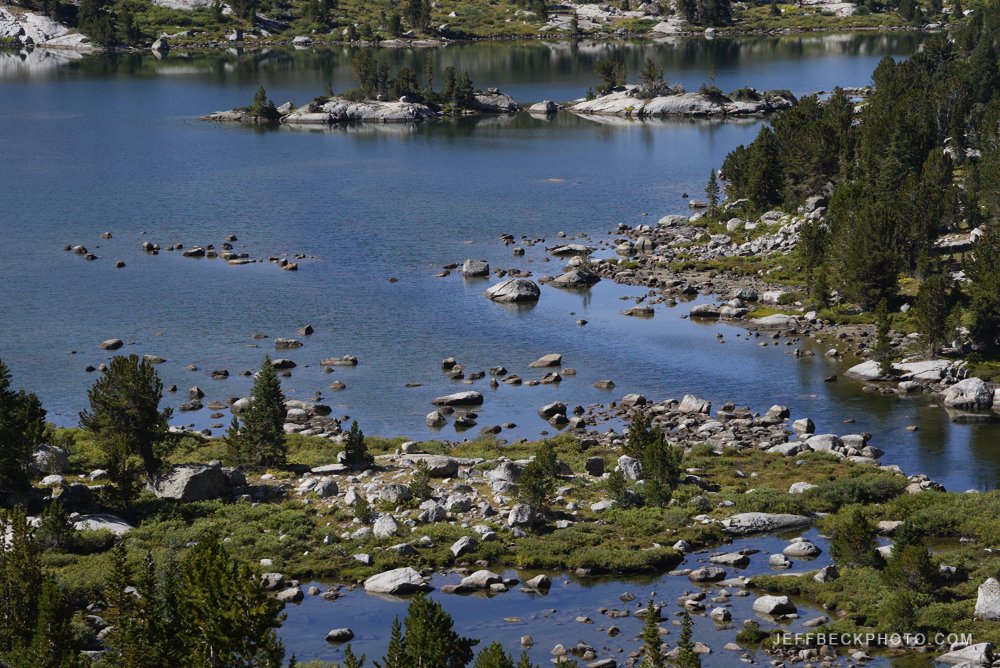
The week before Labor Day 2022, Scott and I did a fabulous six day lolly pop loop from the Scab Creek Trailhead into the Bridger Wilderness of Wyoming. We pushed it on day two to get to a private peninsula halfway up the east side of Rainbow Lake where I made my best ever Milky Way images. On day three we moved camp a short distance to near the outlet of Lee Lake and did a most excellent day hike to Noel Lake and the Continental Divide. Well above treeline, at the base of Nylon Peak, Noel Lake was an instant classic and is high on my list of the most stunning alpine lakes I’ve ever seen. The next day we would visit Donna and take an icy dip. We spent night four on the rocky terraces beside Bonneville Lake after a productive sunset photo session. On the hike out we passed stunning lakes and meadows that invited us to stay the rest of the season. The high grassy meadow lands with massive lakes in the Raid Lake/Dream Lake zone seemed worthy of more time than we had. We spent our last night in the vicinity of Little Divide Lake and got a burger and a beer the next afternoon at the brewery in Pinedale before saying sayonara.

































